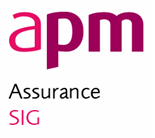How do behaviours impact project assurance?

How do behaviours impact on assurance processes and how do the ‘right’ behaviours support successful assurance mechanisms and ultimately project success? These and other questions we will try to answer as part of a future research project, led by the APM Assurance Specific Interest Group.
When assurance works well we see open and honest contributions, strong senior buy-in, and recognition of the real value that assurance outputs can provide. On the flip side, bad behaviours can creep into the assurance process and these can include hiding the truth, promoting personal agendas, and acting in an adversarial way.
The different actors in the assurance process, and positive and negative behaviours can trigger impacts on others and reduce the value of assurance outputs. For example, assurance reviewers who act like the ‘project police’ are likely to trigger feelings of concern or fear amongst the people they are assuring, which is not a recipe for success.
Similarly, a project team who don’t recognise the value of assurance and fail to contribute to a review in an open, positive way are unlikely to get back any real value from the exercise.
During a recent workshop session we got together with a group of volunteers to think about the scope of our research and explore what both good and bad behaviours look like and their associated impacts. The session recognised that there is a lot for us to think about, including answering questions like:
- How do good behaviours and good practice fit together?
- How do behaviours link to organisational context and maturity?
- How can existing behavioural models help us to understand the human dimensions of assurance mechanisms?
Over coming months we will be exploring these and many other questions and speaking to a wide range of project professionals to get their views. Ultimately, we want to produce some practical materials that help practitioners understand what good behaviours look like in the assurance process, and in turn help to maximise the value that assurance can provide to project teams and other key stakeholders.
We are keen to hear your views so please do share your thoughts on this topic and get in touch if you are interested in contributing to our research. Please email:
joanne.bradshaw@crowncommercial.gov.uk or charles.mills@cpcprojectservices.com


1 comments
Log in to post a comment, or create an account if you don't have one already.
The most obvious difficulties come from poor behaviours between assurance providers, the people they are providing assurance about, and the people to whom they are providing the assurance. All on sides. However, something I have noticed as a long-time assurance provider, and previously an assurance receiver, is that behaviours between assurance providers can be just as big a block to good assurance. Assurance professionals in different areas (e.g. Quality Assurance and Internal Audit) often do not trust each other, each seeing their assurance as of greater value than that of the other. This is clearly a nonsense situation. For maximum value, assurance providers need to collaborate, and different assurance needs to be combined to build an overall picture.